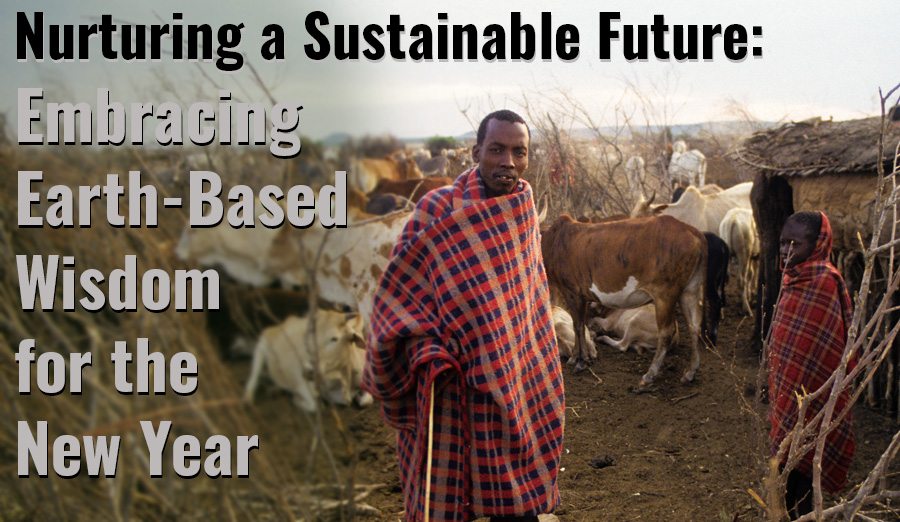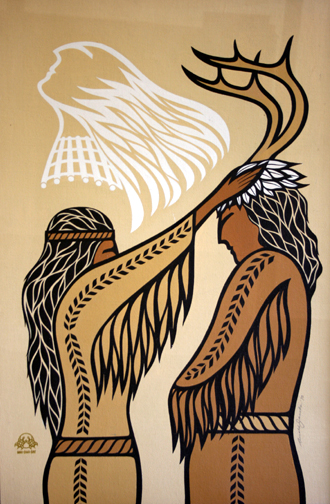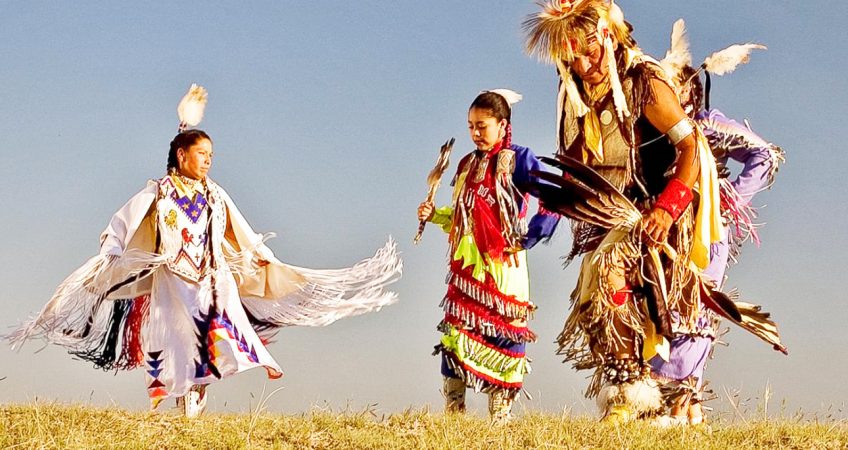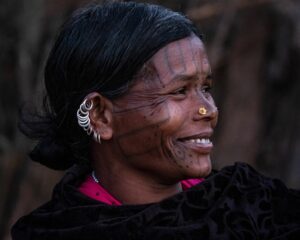
By Rubina Cohen
In an age where technology propels us forward and the world seems more connected than ever, there arises a pressing need to return to the roots of our existence—Earth-based wisdom. Indigenous cultures, with their profound insights into sustainable living, interconnectedness, and harmonious coexistence with nature, provide a beacon for humanity. This blog post urges us to recognize the urgency of un-learning detrimental habits and re-learning the principles of Earth-based wisdom for the well-being of both our species and the planet.
1. Interconnectedness and Balance:
Indigenous cultures offer a unique perspective on life—one that views everything as interconnected and highlights the delicate balance necessary for the planet’s sustenance. Contrary to the prevailing ethos of exploitation, Earth-based wisdom encourages us to see nature as a holistic system where every action sends ripples through the interconnected web of life. How can we shift our perspective from one of dominance to one of partnership with the Earth, fostering a sense of responsibility for the greater whole?
One compelling example of a society deeply rooted in the principles of interconnectedness and balance is the Haudenosaunee, a group of Indigenous tribes in North America. The Haudenosaunee, consisting of the Mohawk, Oneida, Onondaga, Cayuga, Seneca, and later the Tuscarora, provides a rich case study of Earth-based wisdom in action. In a future blog post I will share in more detail the ways of the Haudenosaunee as a compelling blueprint for acting and living on our planet.
2. Sustainable Practices:
Traditional Indigenous practices often revolve around sustainable living, demonstrating a profound respect for nature’s resources. As we grapple with the environmental challenges posed by modern industrial practices, what lessons can we draw from Indigenous communities regarding sustainable agriculture, resource management, and waste reduction? How can we apply these lessons to create a more sustainable and regenerative future?
For example, the Maasai, a semi-nomadic Indigenous peoples residing in Kenya and Tanzania, traditionally practice nomadic pastoralism, moving their livestock in harmony with the seasons. This rotational grazing allows pastures to recover, preventing overgrazing and maintaining the ecological balance of the land. This sustainable approach to animal husbandry ensures the long-term health of the ecosystem.
3. Spiritual Connection to Nature:
Indigenous belief systems often emphasize a spiritual connection to nature, recognizing the Earth as a living entity deserving reverence. How might fostering a spiritual connection to nature contribute to a more profound sense of responsibility and care for the environment in our daily lives? Can spirituality be a catalyst for transformative change in our relationship with the Earth?
The Lakota Sioux, an Indigenous community with a deep historical connection to the Great Plains of North America, engage in sacred ceremonies that are deeply rooted in nature. The Sun Dance, for instance, is a central spiritual ritual that takes place during the summer months. Participants fast, pray, and engage in dance as a way of expressing gratitude to the Great Spirit for the sustenance provided by the Earth. This ceremony reinforces the interconnectedness between the Lakota people and the natural cycles of the land.
4. Cultural Preservation and Respect:
The globalization phenomenon has unfortunately led to the erosion of Indigenous cultures. How can we learn from and preserve the rich cultural tapestry of Earth-based wisdom? What steps can we take to respect and value the diversity of knowledge that different communities hold, ensuring that these invaluable insights are not lost but celebrated?
The Adivasi communities of India stand out as exemplars of cultural preservation and respect for their heritage. Spread across different regions of India, Adivasis, meaning “original inhabitants” or “tribal people,” encompass a multitude of distinct ethnic groups, each with its unique traditions, languages, and practices.
Adivasi cultures place significant importance on oral traditions and storytelling as a means of passing down knowledge from one generation to another. Elders within the community play a crucial role in preserving and transmitting cultural narratives, historical events, and traditional wisdom. This emphasis on oral traditions ensures the continuity of cultural values and practices.
5. Un-Learning Destructive Practices:
The process of un-learning deeply ingrained patterns of consumption and exploitation is undoubtedly challenging. Yet, it is a necessary step in aligning ourselves with Earth-based wisdom. How can individuals and societies break free from destructive habits, and what concrete actions can be taken to embrace a lifestyle that is in harmony with the Earth?
Conclusion
Returning to Earth-based wisdom is a forward-looking imperative for the survival of our planet and the well-being of future generations. This journey is not a nostalgic retreat into the past but a conscious choice to integrate timeless wisdom into our contemporary lives. By un-learning harmful practices and re-learning the principles advocated by Indigenous cultures, we can usher in a new era of sustainable and harmonious coexistence with the Earth.
Reflection Questions:
Below are some questions to consider as we head into the New Year. Please reflect on these in any way that is meaningful for you. Some suggestions for reflection could occur through conversation and dialogue with friends and family, silent reflection, meditation, and/or journaling.
- How can you personally incorporate Earth-based wisdom into your daily life, aligning with a more sustainable and harmonious way of living? What small steps could you take today?
- In what ways can modern societies integrate Indigenous knowledge into education and policy-making to foster a deeper connection with the Earth?
- What personal challenges do you foresee in un-learning destructive habits and embracing a more Earth-centric lifestyle, and how could you overcome them?
Resources:
-
- Kimmerer, R. W. (2013). “Braiding Sweetgrass: Indigenous Wisdom, Scientific Knowledge, and the Teachings of Plants.”
- Martinez, E. (2012). “Creating a Sustainable Vision of Indigenous Economic Sovereignty.”
- Cajete, G. (1994). “Look to the Mountain: An Ecology of Indigenous Education.”
- Smith, L. T. (2012). “Decolonizing Methodologies: Research and Indigenous Peoples.”
- Indigenous Environmental Network.
- United Nations Declaration on the Rights of Indigenous Peoples.
- “Maasai” by Dorothy L. Hodgson (1999)
- “The Iroquois and their History” by Dean Snow (1996)
- “Black Elk Speaks” by John G. Neihardt (1932)
- “The Adivasis of India: A History of Discrimination, Conflict, and Resistance” by Boro Baski (2011)






